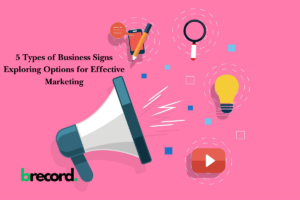AI-Driven Transformation’ AI is not a term thrown into the mix for the sake of it anymore, it has evolved from being a concept to redefining the entire industries along business models. But how can any business owner figure out when their business is ready to embrace such changes fueled by AI? The answer is integration isn’t easy, it is often not straightforward and takes a lot of planning to achieve AI integration.
With a growing number of companies integrating AI into their operations, the status quo may no longer be an option. It is equally important to discern when AI can be appropriately deployed. There are several things that point to a need for change- be it data availability, leadership, or other factors.
So, do you want to know these important aspects? Let’s explore the key determinants that illustrate the readiness of your organization for the AI transformation!
Why it Is Important to Assess the AI Change Readiness of Your Business
Change readiness is very important factors in any organization in the current landscape. Going down the AI path, particularly the implementation part, without doing extensive prior research can lead to waste of time and opportunities as well as resources that personnel have dedicated toward AI.
Being able to evaluate change readiness minimizes the risk of deploying AI driven business without addressing issues that remain unaddressed. Strategizing saves the organization time which in turn aids in the efficient execution of plans, minimizing chaos during implementaion of AI plans.
In addition, understanding your level of preparedness helps gain the stakeholders’ trust. Knowing the capabilities and the limitations of the leadership goes a long way in gaining the trust of the internal teams and the clients.
An understanding approach further extends the cost-benefit of AI. When technology deployment is according to an organization’s focus areas, the data is effectively utilized, and innovation is taken a notch higher.
All in all, preparing for the assessment that determines the organizations’ level of readiness helps the organization to remain competitive in a fast-changing environment that is dominated by technology change.
Data Availability and Quality
The second indicator here is data availability and data quality which is the most important naked truth of AI transformation. Data without a clear structure is the biggest threat of AI strategies.
Evaluate the kinds of data that are within your reach right now. Is it structured or unstructured? It is important to note that the quality of your data will significantly determine the efficiency and effectiveness of AI.
However, it is not only the volume that counts, but quality is as important. Only when the data is cleaned, relevant, and not outdated can algorithms perform their tasks properly. Otherwise, there will be poor performance, leading to poor choice-making and wastage of resources.
Furthermore, think about accessibility. Can your teams access this important data? Integrating sharing of data across different organizational departments increases synergies and enhances creativity.
Finally, spending efforts to clean your datasets lays good grounds for the implementation of the artificial intelligence solutions into your business model, and a lot gets done.
Employee Skills and Training
You cannot ignore the skillset and training of the employees when looking at your organizational readiness to undertake changes as driven by AI. Technology is always changing, and so should your workforce.
Analyzing the present skill level of the employees can help in identifying the areas that require additional training or development. Are they adept at using and conducting data analyses? Can they look beyond the data and utilize AI tools’ insights? These are some of the important questions.
Implementing strong training programs improves skills but also includes boosting morale within an organization. Employees tend to have a positive attitude towards change if they are trained on the relevant technologies.
Do not forget to also explore cross-training options. Interdepartmental cooperation may also help in encouraging innovation.
After all, technology is important, but it is the people that achieve results. If your employees are to work with AI arranged tasks, then they need to be ready for what comes ahead.
Customer Demand and Behavior
It is not new or an easy feat to revolutionize an organization into one that is AI-oriented. Customers these days are educated and well-connected and maximize these multiple touchpoints with any brand.
For example, if the demand for certain products changes over time or the consumers are looking to interact on a different level, this could be a gap that can be filled by AI. AI can address the issue of personalized service and increase sales as customized recommendations can be provided while shopping.
They can justify the sequences of customers’ purchases and the customers’ opinions to analyze and improve operational activities. Predictive models present a more advanced means to unlock data, which can improve understanding of future events.
Constant observation of macroeconomic dynamics facilitates timely updates of the relevant activities. Businesses that have AI capabilities will not simply react to their customers’ needs but will seek to predict them on their own. This helps build customer trust which leads to increased business growth in a very competitive market.
Industry Competitiveness
The next area that helps provide strong evidence that an organization is well placed to take on AI applications has to do with level of competition within their industry. As expected, in case there are already AI users among your competitors, you can’t afford to fall behind. A great deal has changed, and it is easy to miss out on some crucial opportunities by trailing too far behind.
How about organizations in the same market? What scope of AI do they deploy? Do they employ it to improve customer relationships or do they streamline business processes? Finding these aspects then helps position yourself within the market.
If you find yourself being the only one innovating or your peers are not even trying to do some crazy stuff, then it’s your time to shine. But in cases where the majority of players have moved on to newer technologies, the need to change is greater.
Focus on that and try to find ways in which AI can give you an edge over other sellers. Track what is currently in vogue and what specific practices are relevant to your field. This aggressiveness will work to your advantage as most of your competitors may be very resistant towards change.
Financial Resources and Investment Capacity
Financial resources and investment capacity readiness is also an important check on the readiness of your business for transformation with AI. When implementing AI technologies, there is always the need for some preliminary investments that can range from buying the necessary software to upgrading the infrastructure.
Have a look at your present situation and your forecasted budget. Will there be any room for investment in new technologies without putting the business on resourcing constraints?
Not only the buying cost, but look at the indirect costs as well such as maintenance of the new system, training, and employment of new people with the right mix of skills.
You would have also noticed how the first important aspect is knowing whether the company has a solid financial basis. Once the company does, it can look forward to bringing in Artificial Intelligence into their systems and processes as there would be more expertise and integration be required. Out of this readiness will come solutions that will be more unique and innovative allowing greater productivity and growth.
Even the best ideas regarding AI could wilt before they take off due to lack of funding or investment capabilities. Taking care of this aspect makes sure that you will not be fighting an uphill battle when it comes to adopting change that is AI driven.
Support for Change by Leaders and the Acquisition of a Vision
Without leadership buy-in, the major transformation and change powered through AI, cannot be executed. When the decision makers don’t find common ground on any issue, then any endeavor may struggle before it starts.
Integrating AI into business processes calls for a clear strategy. Leaders have to be reasonably aware of the possibilities and advantages that these technologies can bring. This knowledge builds up a society that supports change rather than shies away from it.
Also, leaders must elaborate their visions in a variety of organization levels. There are better engagement rates with new programs when employees see top level management supporting new initiatives.
Creating an atmosphere of open communication regarding AI helps mitigate issues and build interest among staff. Strong leadership is at the heart of successful stage advancement as well as the highest possible return on the investment in AI technology.
Next Steps for Implementing AI-driven Transformation in Your Organization
After gauging your readiness for AI driven transformation, it is time to step out of your comfort zone. First, seek to define particular tasks where AI can aid you, such as increasing the quality of customer service or enhancing supply chains.
Write down the driving forces behind an implementation plan. This should outline the deadlines, the resources required, and the KPIs, how will you measure success. Get your teams involved as soon as possible; they can help to identify possible obstacles to be placed.
Get the appropriate tools and technologies. For example, incorporate cloud-based services which can help you scale when required.
The training is also important—make sure that your workforce is able to make use of new systems.
In the end, create a place for changes in your organization. Through changes, bring new ideas and cross-functioning in departments and create an environment that supports a shift to AI-driven model of business.
Conclusion
The transition to AI based transformation is only strong but a future where all businesses must embrace the change. Still, prior consideration of their readiness will help to avoid unpleasant surprises and failures during the process of transformation. Knowing them better would greatly increase your chances of being successful in the new digital era.
Establishing whether your organization is in a state of readiness for an AI fueled transformation change requires you to assess the worthy parameters: quality of data, level of technology as well as the skill of employees. Factors such as customer behavior analysis are also vital, together with the revenues generated and the availability of funds for transforming the technologies. Finally, having effective, persuasive leaders helps to ascertain that the vision is consistent with the corporate strategy.
Taking these actions will in the long run create opportunities for a more seamless deployment of AI Towards achieving the key goals within the organization. The universe is fast changing for the better and business organizations that will be able to cope with these changes will be successful, both competitively and in their customers responded. Don’t stand outside this gateway that will allow you to change the way you do business with AI: it may be the highlight of your company: the emergence of new possibilities for growth and development.



